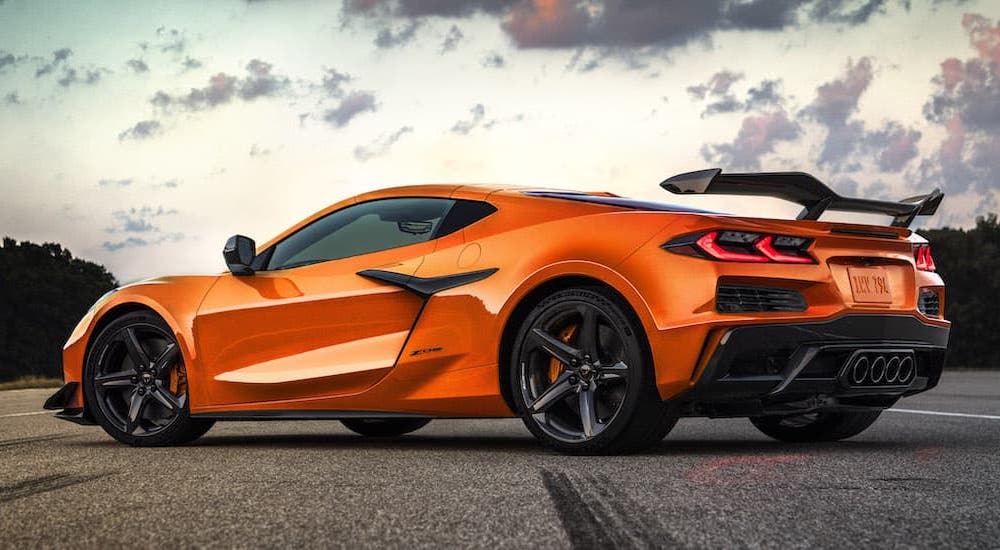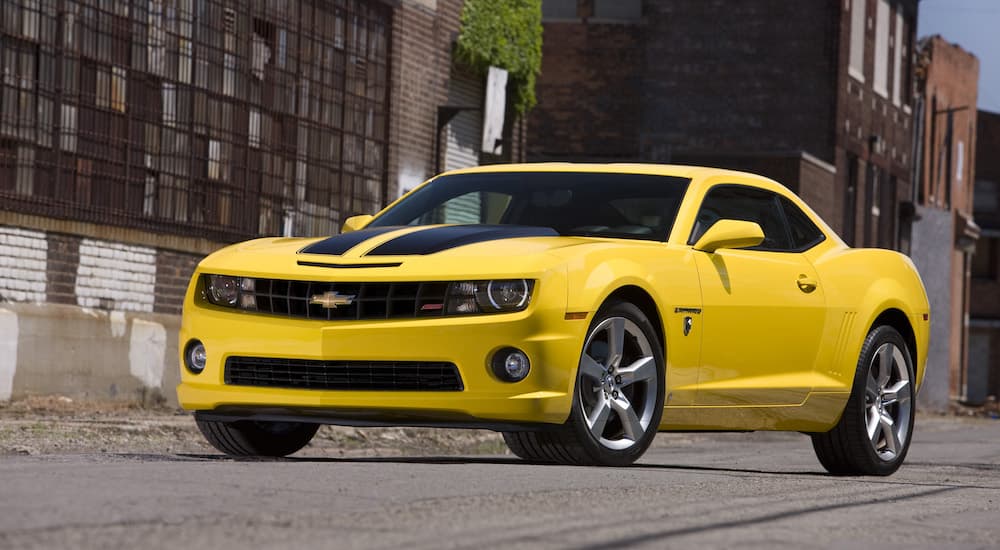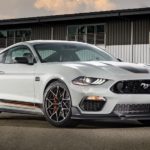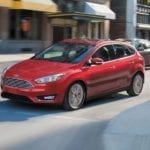Throughout history, there have always been those who have met their match. Pepsi versus Coca-Cola. Levis versus Wranglers. Batman versus Superman. And, of course, Chevrolet versus Ford. For decades, drivers have turned to these brands when they have wanted a reliable, durable vehicle that they know will outperform most other comparable manufacturers. The moment a Chevrolet dealer goes up, you can almost guarantee that a Ford dealer will go up nearby soon enough. It’s like the way Starbucks and Dunkin’ also show up in the same places. You’d think each would worry about stealing business from the other, but in reality, both companies know that their loyal fans like what they like.
The same goes for Chevrolet and Ford. People will often tell you they’re a Chevy person or they’re a Ford person, and once they choose a brand, they buy from that one for life. That, of course, doesn’t stop Chevy and Ford from always trying to convert their competition’s customer base over to their side. Of course, where a rivalry exists, the two things must be comparable in nature in some way––or many ways. So, why are Chevy and Ford rivals? Here are seven pretty good reasons.
American Heritage
Both manufacturers have been in business for over 100 years. They’ve each been with us through so many historical moments. People sat on the backs of their Ford and Chevy pickups, respectively, to listen to the moon landing on their radios. Both manufacturers built vehicles for our troops during World War II. People loaded up their Chevys and Fords with survival gear in anticipation of Y2K. They’re a part of our history. Your parents, their parents, and possibly even their parents drove Fords and Chevys.
Their Pickups Go Head to Head Yearly
Both Ford and Chevy are known for making incredible pickup trucks. Their trucks fill farms, construction sites, warehouse lots, and just about every place where tough work needs to be done across the country. They’ve each been named top sellers and fan favorites by notable publications and organizations, year after year after year. They have basically cornered the pickup truck market. When people think “pickup truck,” they either think Chevy or Ford, and sometimes they think both.
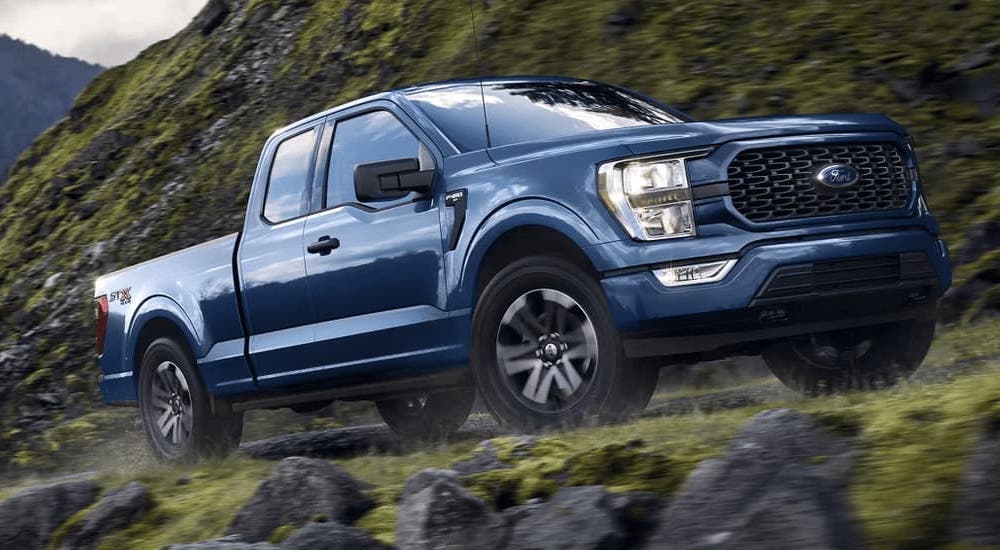
They Compete in the Same Spaces
Ford and Chevy both make excellent SUVs and pickup trucks. They are sort of known for them. From Chevy’s Traverse, Suburban, Tahoe, Blazer, and beyond to Ford’s Expedition, Explorer, Escape, and Bronco, each manufacturer makes popular SUVs, in every size. Then, of course, they have their pickups. Chevy has its beloved light-duty and heavy-duty Silverado. Ford has its light-duty and heavy-duty F-series.
They each have sports vehicles with cult followings, too. For Ford, that’s the Mustang, of course, and for Chevy, that’s the Corvette. Plus, they put out electric vehicles around the same time, keeping their eco-friendly-minded customers loyal. They even each have commercial fleet options and cutaways for businesses. Their lineups almost mirror one another in terms of types of body styles.
They Both Win Safety Awards
Each of these manufacturers has won plenty of safety awards for their vehicles. For example, the 2023 Silverado earned a five-star overall safety score from the National Highway and Traffic Safety Association. The 2023 Trailblazer also got that five-star rating from the NHTSA and was named a Top Safety Pick+ by the Insurance Institute for Highway Safety (IIHS). Ford snagged some Top Safety Pick ratings from the IIHS, too, for the 2022 Escape, the 2023 Edge, the 2023 Explorer, and others. Both brands boast proprietary suites of driver-assist features that they continue to expand on. These give drivers improved awareness on the road, and more command in a variety of situations, reducing the chances of accidents.
They Both Offer Special Tailgates
On their pickups, each of these brands also offers multi-functioning tailgates that can be set to nearly identical positions to offer things like steps for easy access to the bed, work surfaces, and load stops. They might have different names, but they offer similar functions that are convenient for DIYers, farmers, contractors, and the like.
They Cater to Similar Budgets
Ford and Chevrolet both offer vehicles in a very similar budget range. Each one has vehicles with starting MSRPs in the $20,000 range, a solid range of options in the $30,000 range, and a handful up in the $50,000 and $60,000 range. Plus, within most of their models, they offer a similar range of trim lineups to cater to even more specific sectors of each budget range, including off-road and luxury variations. They very clearly target the same buyers with their prices.
They Each Have Off-Road Stars
Each of these manufacturers makes an off-road vehicle that avid off-road enthusiasts are buzzing about. For Chevy, it’s the Chevy Silverado ZR2. The 2023 model has all-terrain tires, excellent ground clearance, a serious 6.2-liter V8 engine, an impressive 8,900-pound maximum towing capacity, and a 420-horsepower engine. It also has an incredible approach angle and a payload rating of up to 1,440 pounds. Then, the Ford has the Raptor. The 2023 model has a nice V6 engine kicking out 450 horsepower, massive tires, a suspension made to absorb those bumpy off-road terrains, and a solid breakover angle along with high ground clearance. People who are serious about off-road experiences often turn to one of these pickups.
They’ve Both Been on the Silver Screen
Both of these brands have had their vehicles featured on the Silver Screen. In fact, they’ve snagged major roles. The Ford Falcon appeared in Mad Max, the Ford Shelby was in Gone in 60 Seconds, the Ford Thunderbird was in Thelma and Louise, and the Ford F-150 was in The Fast and the Furious.
Chevy is quite the movie and TV star, too. There have been two Corvette appearances in Miami Vice, a Suburban in Sopranos, a Silverado in Friday Night Lights, several vehicles in Narcos, an Impala and a Corvette in Goodfellas, a Camaro in Transformers, and the list goes on. Each of these manufacturers has had vehicles not only in some of the most iconic films and shows in entertainment history but also in films and shows specifically about incredible cars.
A Natural Rivalry
It’s easy to see why these two vehicles are considered rivals in the minds of many. If you track the specific moves they’ve made over the years and areas they’ve focused on, you might almost guess they’ve made strategic plans behind closed doors to keep a close eye on one another. Just when one adds a new driver assist feature, so does the other. Just when one beefs up one of their beloved pickups, so does the other. And just when one goes electric, so does the other.
Chevrolet and Ford have seriously devoted fan bases, and because their vehicles last for such a long time, you see many people on the road today driving a Ford or a Chevy that they’ve had for decades. The brands are each comforting in a way. They bring up a tinge of nostalgia when you see their logos. Whoever you are reading this, you’ve probably had Fords and Chevys around in your life, in prominent ways, since you were a kid. Your favorite PE teacher drove one. Your grandpa drove one. That cool high schooler at your school had one of their muscle cars. In the end, rivalries only make both companies stronger, so we think this is a healthy competition, and we hope it’s here to stay.
